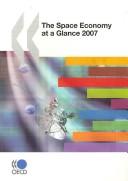| Listing 1 - 10 of 1533 | << page >> |
Sort by
|
Digital
Year: 1997 Publisher: Cambridge, Mass. National Bureau of Economic Research
Abstract | Keywords | Export | Availability | Bookmark
 Loading...
Loading...Choose an application
- Reference Manager
- EndNote
- RefWorks (Direct export to RefWorks)
Digital
Year: 1998 Publisher: New York, N.Y. Federal Reserve Bank of New York
Abstract | Keywords | Export | Availability | Bookmark
 Loading...
Loading...Choose an application
- Reference Manager
- EndNote
- RefWorks (Direct export to RefWorks)
Digital
Year: 1997 Publisher: Cambridge, Mass. National Bureau of Economic Research
Abstract | Keywords | Export | Availability | Bookmark
 Loading...
Loading...Choose an application
- Reference Manager
- EndNote
- RefWorks (Direct export to RefWorks)
Digital
Year: 1997 Publisher: Cambridge, Mass. National Bureau of Economic Research
Abstract | Keywords | Export | Availability | Bookmark
 Loading...
Loading...Choose an application
- Reference Manager
- EndNote
- RefWorks (Direct export to RefWorks)

ISBN: 1557756430 Year: 1997 Publisher: Washington, D.C. International Monetary Fund
Abstract | Keywords | Export | Availability | Bookmark
 Loading...
Loading...Choose an application
- Reference Manager
- EndNote
- RefWorks (Direct export to RefWorks)
Digital
Abstract | Keywords | Export | Availability | Bookmark
 Loading...
Loading...Choose an application
- Reference Manager
- EndNote
- RefWorks (Direct export to RefWorks)

ISBN: 9789264040847 9789264031098 Year: 2007 Publisher: Paris OECD
Abstract | Keywords | Export | Availability | Bookmark
 Loading...
Loading...Choose an application
- Reference Manager
- EndNote
- RefWorks (Direct export to RefWorks)
Space applications are becoming an increasingly important part of everyday life. Weather forecasting, air traffic control, global communications and broadcasting, disaster management -- these and many other key activities would be almost unthinkable today without satellite technology. The space industry itself is relatively small compared to other manufacturing sectors, but its technological dynamism and strategic significance mean that it plays an ever more critical role in modern society. Paradoxically, it also figures among the sectors which are the least developed in terms of robust, internationally comparable statistics and data. This book attempts to rectify that situation by assembling information from a wide range of official and non-official sources. Together these paint a richly detailed picture of the space industry, its downstream services activities, and its wider economic and social impacts. Who are the main space-faring nations? How large are revenues and how much employment is there in the sector? How much R&D goes on, and where? What is the value of spin-offs from space spending? Answers to these and other questions are provided in this first-ever OECD statistical overview of the emerging space economy. A dynamic link (StatLink) is provided for graphs, which directs the user to a web page where the corresponding data are available in Excel® format. Space applications are becoming an increasingly important part of everyday life. Weather forecasting, air traffic control, global communications and broadcasting, disaster management -- these and many other key activities would be almost unthinkable today without satellite technology. The space industry itself is relatively small compared to other manufacturing sectors, but its technological dynamism and strategic significance mean that it plays an ever more critical role in modern society. Paradoxically, it also figures among the sectors which are the least developed in terms of robust, internationally comparable statistics and data. This book attempts to rectify that situation by assembling information from a wide range of official and non-official sources. Together these paint a richly detailed picture of the space industry, its downstream services activities, and its wider economic and social impacts. Who are the main space-faring nations? How large are revenues and how much employment is there in the sector? How much R&D goes on, and where? What is the value of spin-offs from space spending? Answers to these and other questions are provided in this first-ever OECD statistical overview of the emerging space economy. A dynamic link (StatLink) is provided for graphs, which directs the user to a web page where the corresponding data are available in Excel® format. Space applications are becoming an increasingly important part of everyday life. Weather forecasting, air traffic control, global communications and broadcasting, disaster management -- these and many other key activities would be almost unthinkable today without satellite technology. The space industry itself is relatively small compared to other manufacturing sectors, but its technological dynamism and strategic significance mean that it plays an ever more critical role in modern society. Paradoxically, it also figures among the sectors which are the least developed in terms of robust, internationally comparable statistics and data. This book attempts to rectify that situation by assembling information from a wide range of official and non-official sources. Together these paint a richly detailed picture of the space industry, its downstream services activities, and its wider economic and social impacts. Who are the main space-faring nations? How large are revenues and how much employment is there in the sector? How much R&D goes on, and where? What is the value of spin-offs from space spending? Answers to these and other questions are provided in this first-ever OECD statistical overview of the emerging space economy. A dynamic link (StatLink) is provided for graphs, which directs the user to a web page where the corresponding data are available in Excel® format.
Digital
ISBN: 9789264040830 9782759800469 Year: 2008 Publisher: Paris OECD
Abstract | Keywords | Export | Availability | Bookmark
 Loading...
Loading...Choose an application
- Reference Manager
- EndNote
- RefWorks (Direct export to RefWorks)
Les applications spatiales prennent une place de plus en plus importante dans la vie quotidienne. Les prévisions météorologiques, le contrôle de la circulation aérienne, les communications et la radiodiffusion à l’échelle mondiale ou la gestion des catastrophes sont autant d’activités clés qui avec bien d’autres seraient inimaginables aujourd’hui sans les satellites. L’industrie spatiale proprement dite constitue un domaine d’activité relativement limité par rapport aux autres industries manufacturières, mais son dynamisme technologique et son importance stratégique lui confèrent un rôle de plus en plus crucial dans la société moderne. Paradoxalement, c’est aussi l’un des secteurs à propos desquels on manque de données fiables et comparables au plan international. Cette publication s’attache à combler cette lacune en rassemblant des informations provenant d’un large éventail de sources officielles et non officielles, qui permettent de brosser un tableau complet de l’industrie spatiale, de ses activités de services en aval et de ses retombées économiques et sociales plus larges. Quelles sont les grandes nations spatiales ? Quelle est l’importance du chiffre d’affaires et de l’emploi dans ce secteur ? Quelle est l’ampleur des activités de R-D et sur quels domaines celles-ci se concentrent-elles ? Quelle est la valeur des retombées des dépenses spatiales ? On trouvera des réponses à ces questions ainsi qu’à d’autres dans ce tout premier tour d’horizon statistique publié par l’OCDE sur l’économie émergente du secteur spatial.Un lien dynamique (StatLink) accompagne les graphiques. Il dirige le lecteur vers une page Web où les chiffres correspondants sont disponibles en format Excel®. Les applications spatiales prennent une place de plus en plus importante dans la vie quotidienne. Les prévisions météorologiques, le contrôle de la circulation aérienne, les communications et la radiodiffusion à l’échelle mondiale ou la gestion des catastrophes sont autant d’activités clés qui avec bien d’autres seraient inimaginables aujourd’hui sans les satellites. L’industrie spatiale proprement dite constitue un domaine d’activité relativement limité par rapport aux autres industries manufacturières, mais son dynamisme technologique et son importance stratégique lui confèrent un rôle de plus en plus crucial dans la société moderne. Paradoxalement, c’est aussi l’un des secteurs à propos desquels on manque de données fiables et comparables au plan international. Cette publication s’attache à combler cette lacune en rassemblant des informations provenant d’un large éventail de sources officielles et non officielles, qui permettent de brosser un tableau complet de l’industrie spatiale, de ses activités de services en aval et de ses retombées économiques et sociales plus larges. Quelles sont les grandes nations spatiales ? Quelle est l’importance du chiffre d’affaires et de l’emploi dans ce secteur ? Quelle est l’ampleur des activités de R-D et sur quels domaines celles-ci se concentrent-elles ? Quelle est la valeur des retombées des dépenses spatiales ? On trouvera des réponses à ces questions ainsi qu’à d’autres dans ce tout premier tour d’horizon statistique publié par l’OCDE sur l’économie émergente du secteur spatial. Un lien dynamique (StatLink) accompagne les graphiques. Il dirige le lecteur vers une page Web où les chiffres correspondants sont disponibles en format Excel®.
Digital
ISBN: 9789264111790 9789264084643 9789264206632 9789264113565 Year: 2011 Publisher: Paris OECD
Abstract | Keywords | Export | Availability | Bookmark
 Loading...
Loading...Choose an application
- Reference Manager
- EndNote
- RefWorks (Direct export to RefWorks)
Space applications have become an important part of everyday life. Weather forecasting, air traffic control, global communications and broadcasting, disaster management -- these and many other key activities would be almost unthinkable today without satellite technology. The space industry itself is relatively small compared to other manufacturing sectors, but its technological dynamism and strategic significance mean that it plays an ever more critical role in modern society. This book assembles information on the space economy from a wide range of official and non-official sources. Together these paint a richly detailed picture of the space industry, its downstream services activities, and its wider economic and social impacts. Who are the main space-faring nations? How large are revenues and how much employment is there in the sector? How much R&D goes on, and where? What is the value of spin-offs from space spending? Answers to these and other questions are provided in this second OECD statistical overview of the emerging space economy. A dynamic link (StatLink) is provided for graphs, which directs the user to a web page where the corresponding data are available in Excel® format. Space applications have become an important part of everyday life. Weather forecasting, air traffic control, global communications and broadcasting, disaster management -- these and many other key activities would be almost unthinkable today without satellite technology. The space industry itself is relatively small compared to other manufacturing sectors, but its technological dynamism and strategic significance mean that it plays an ever more critical role in modern society. This book assembles information on the space economy from a wide range of official and non-official sources. Together these paint a richly detailed picture of the space industry, its downstream services activities, and its wider economic and social impacts. Who are the main space-faring nations? How large are revenues and how much employment is there in the sector? How much R&D goes on, and where? What is the value of spin-offs from space spending? Answers to these and other questions are provided in this second OECD statistical overview of the emerging space economy.A dynamic link (StatLink) is provided for graphs, which directs the user to a web page where the corresponding data are available in Excel® format.
Digital
ISBN: 9782724633443 Year: 2014 Publisher: Paris Presses de sciences Po
Abstract | Keywords | Export | Availability | Bookmark
 Loading...
Loading...Choose an application
- Reference Manager
- EndNote
- RefWorks (Direct export to RefWorks)
| Listing 1 - 10 of 1533 | << page >> |
Sort by
|

 Search
Search Feedback
Feedback About
About Help
Help News
News